stella-zoë schmidtler
CULTURAL LANDSCAPE, LITTORAL LANDSCAPE AND MASS TOURISM:
A POSSIBLE SYNERGY
AVOIDING FAMILIAR MISTAKES
To define the aimed kind of tourism for the second coast, there was developed an fictive index of proper density for recreation, taking in count the current situation at the first coastline. All eleven beaches of Rimini have been analyzed regarding their length, the proportion of open water and beach and the number of rentable sunshades. Presuming the full exploitation of the existing facilities two persons per sunshade as maximum occupancy the result consists of two values: first, the “leftover” space of beach and water per person and second, the number of persons standing in line to bathe if all people would like to swim at the same time. This simple image shows the drastic situation of the currently operated tourism management.
To ensure more balance between tourism, existing nature and wellbeing of all parties for the new touristic strategy, the index macero was developed. The maceri were classified by various criteria such as current usage, their water area, adjacent open space, a.o. The settlement density and the accessibility were ratified and created a reasonable tension for the different kinds of maceri.
At the twelve maceri vetted as an example there would be space for almost 400 visitors. In total there are around 800 maceri in the region of Rimini which could release pressure from the collapsing first coastline.
By mapping the elements related to the landscape formed by the ancient agriculture, the maceri become an important entity, just like a constellation within an interactive universe. It transforms itself into an opportunity to restore and preserve the landscape.
The study of several maceri in association with its ecological hierarchy, the useage and the storage of water permit new interpretations with sui generis: fish farming, shelter, or simply ecological connectors.
Striving a sustainable tourism, the maceri fulfil a great capacity of physical attributes such as water surface, area of accessible open space and ecological connection. Furthermore they have the ability to generate a synergy between cultural landscape and the conscious tourism.
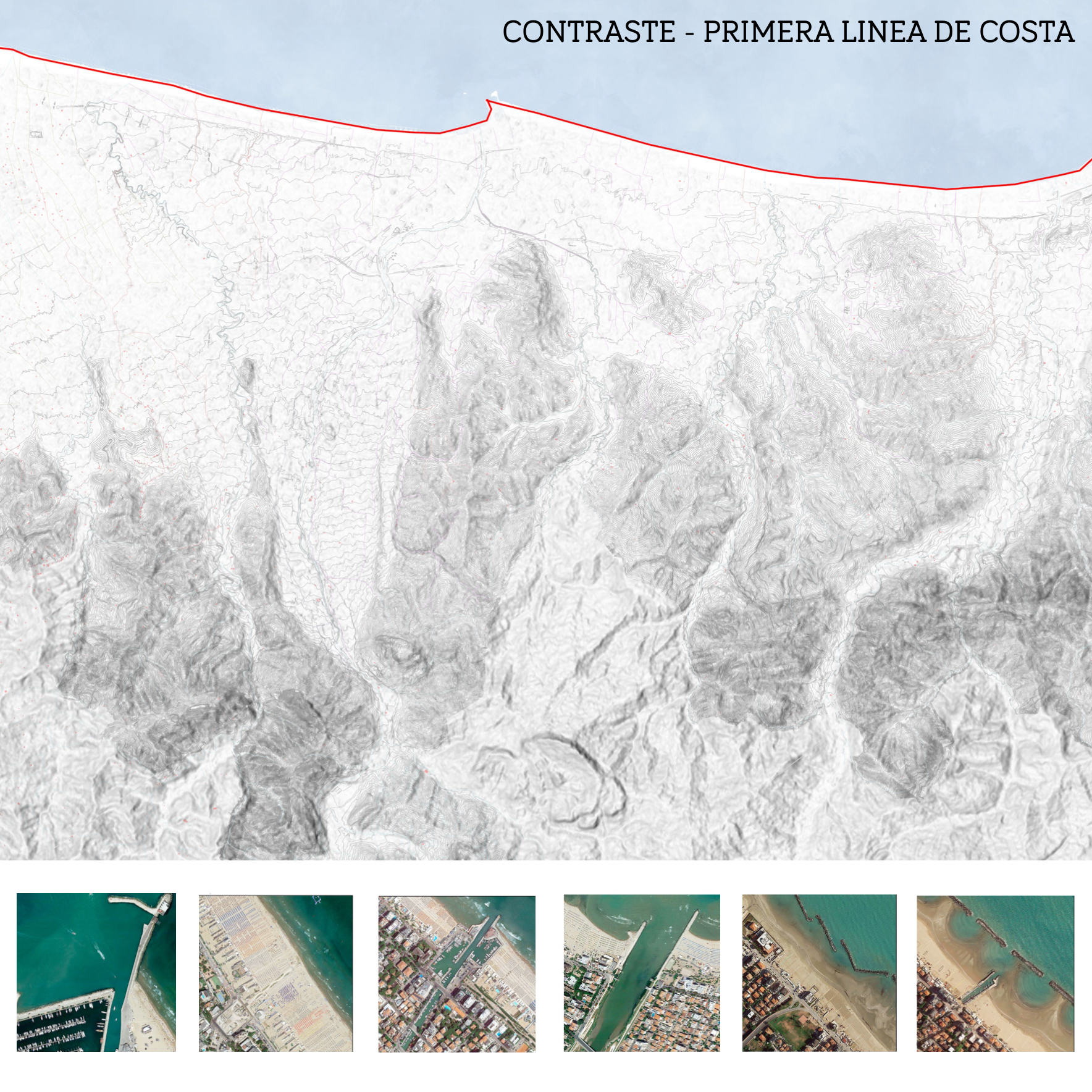
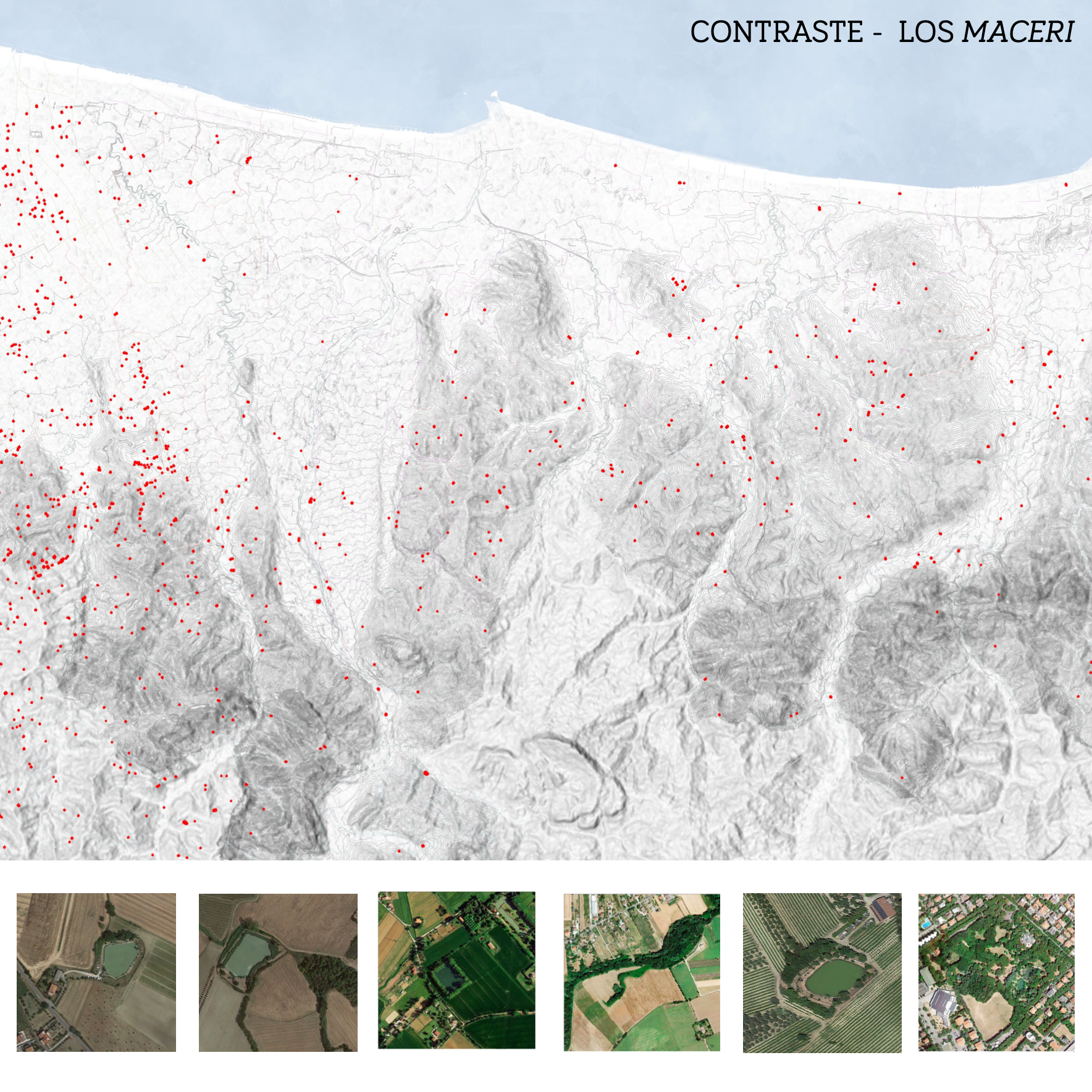
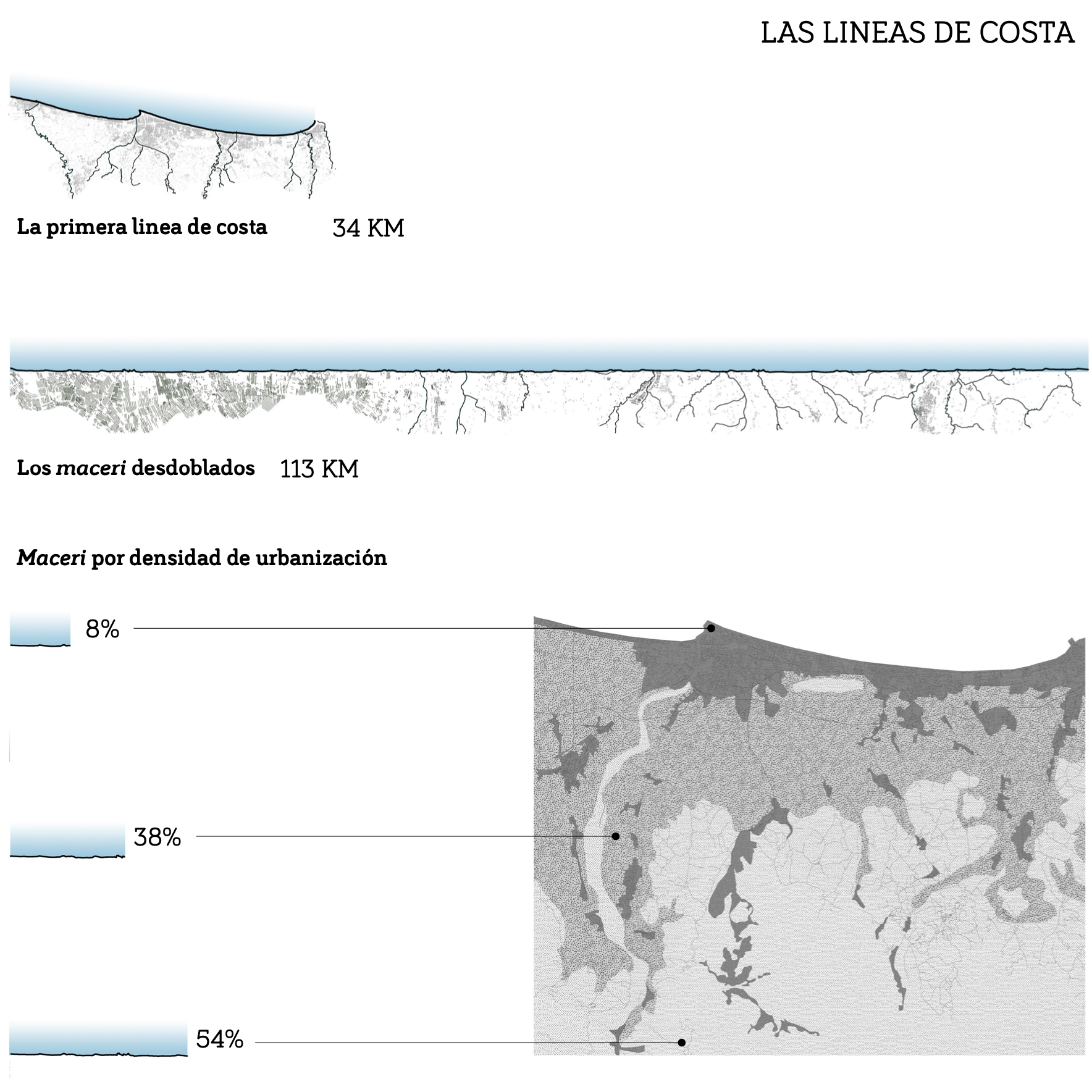
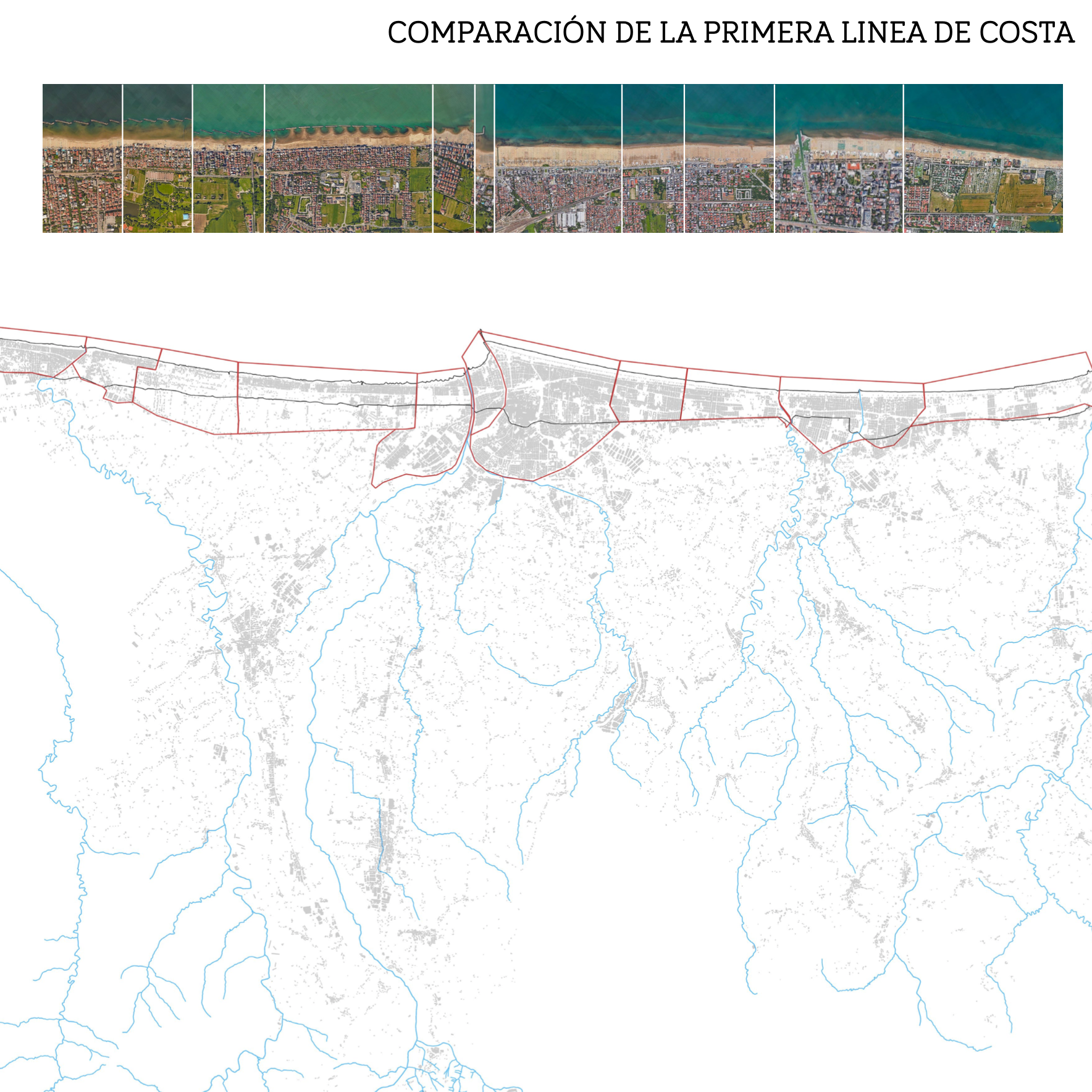
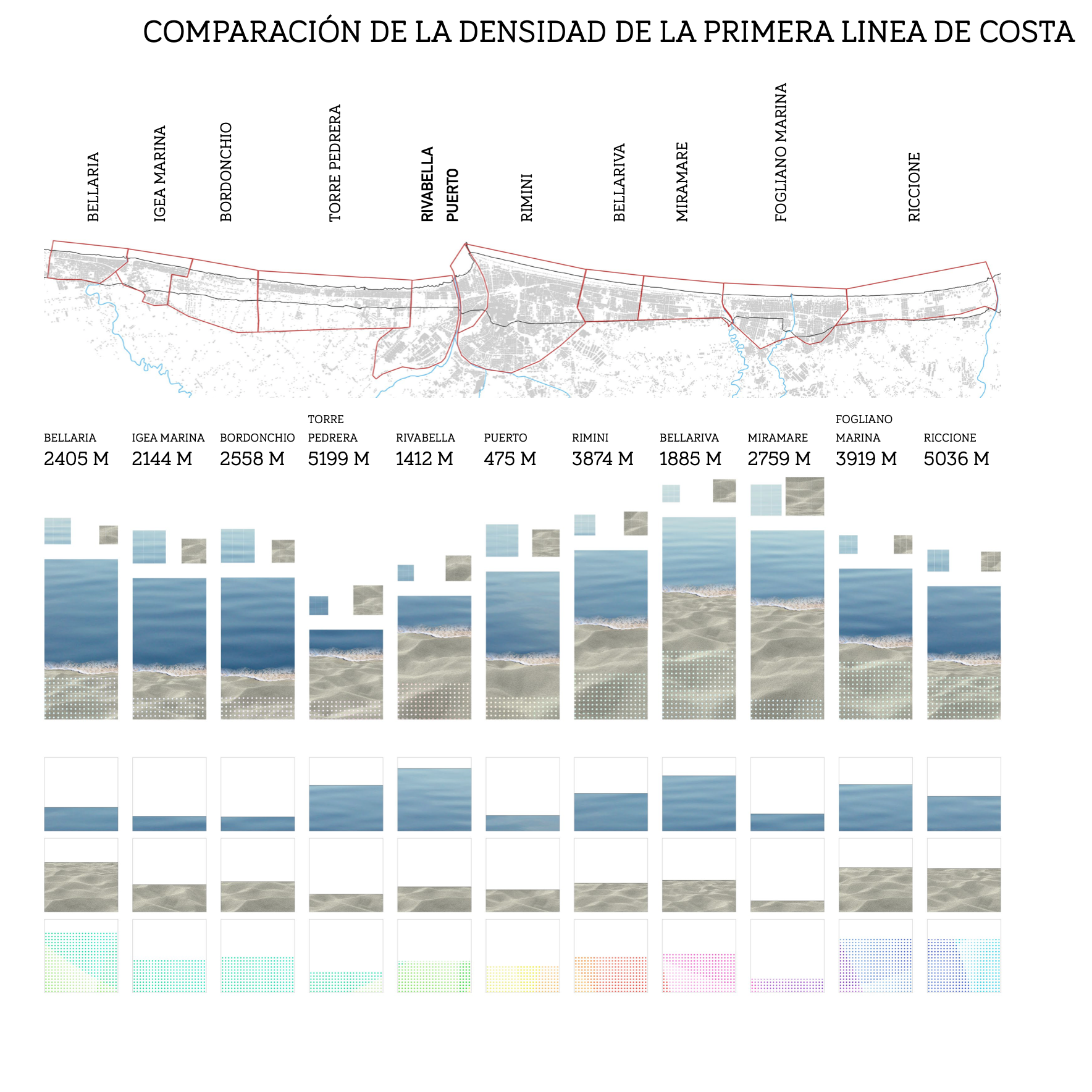
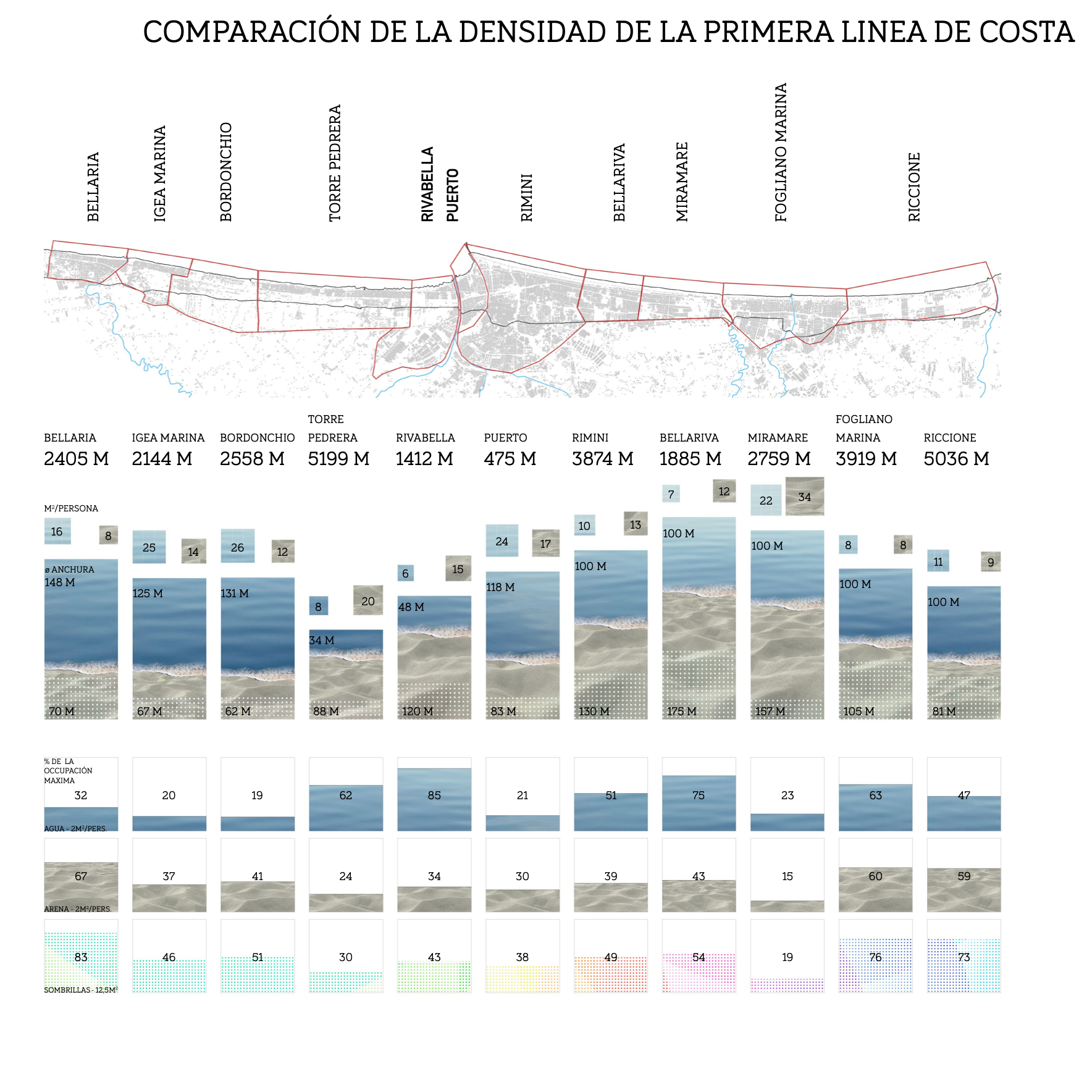
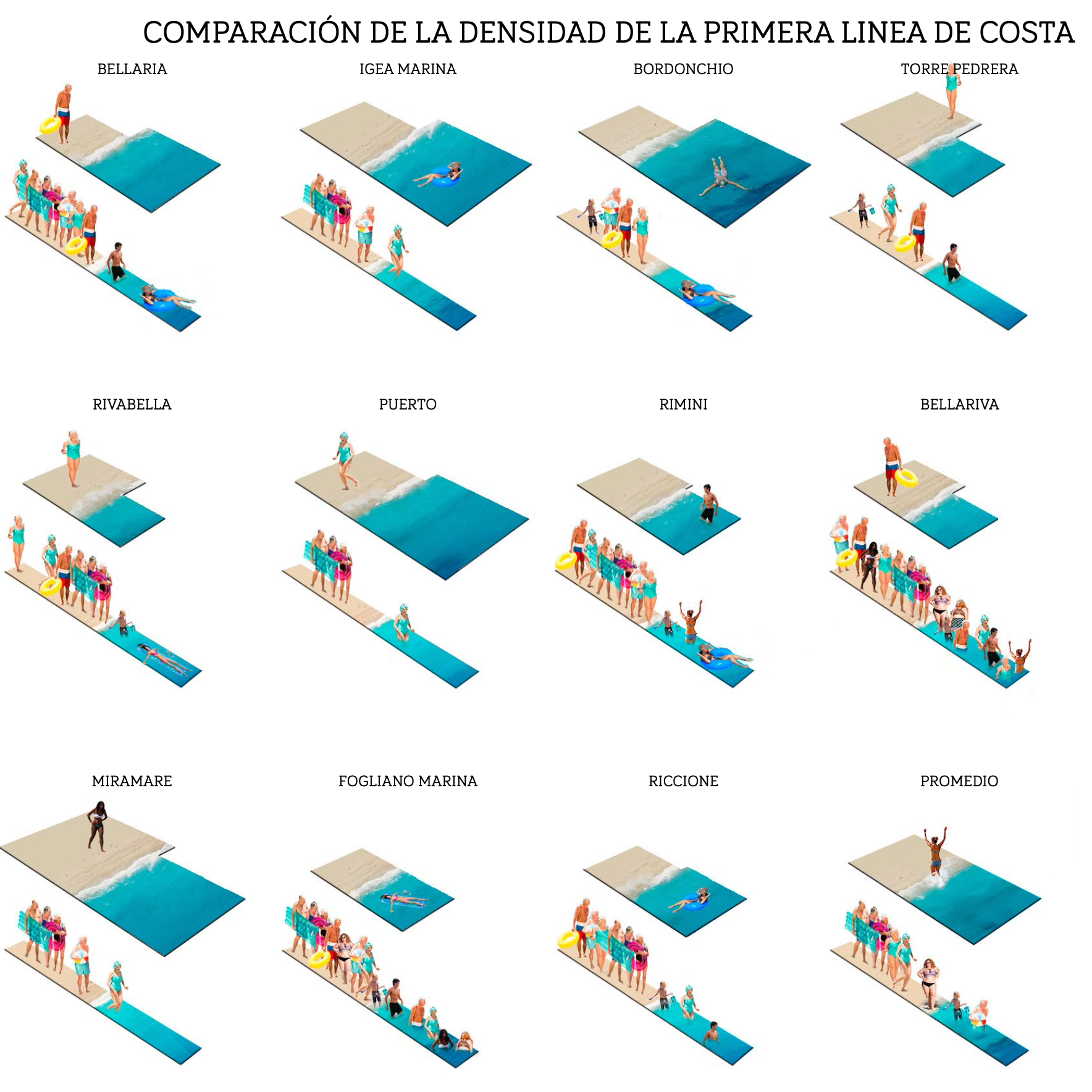
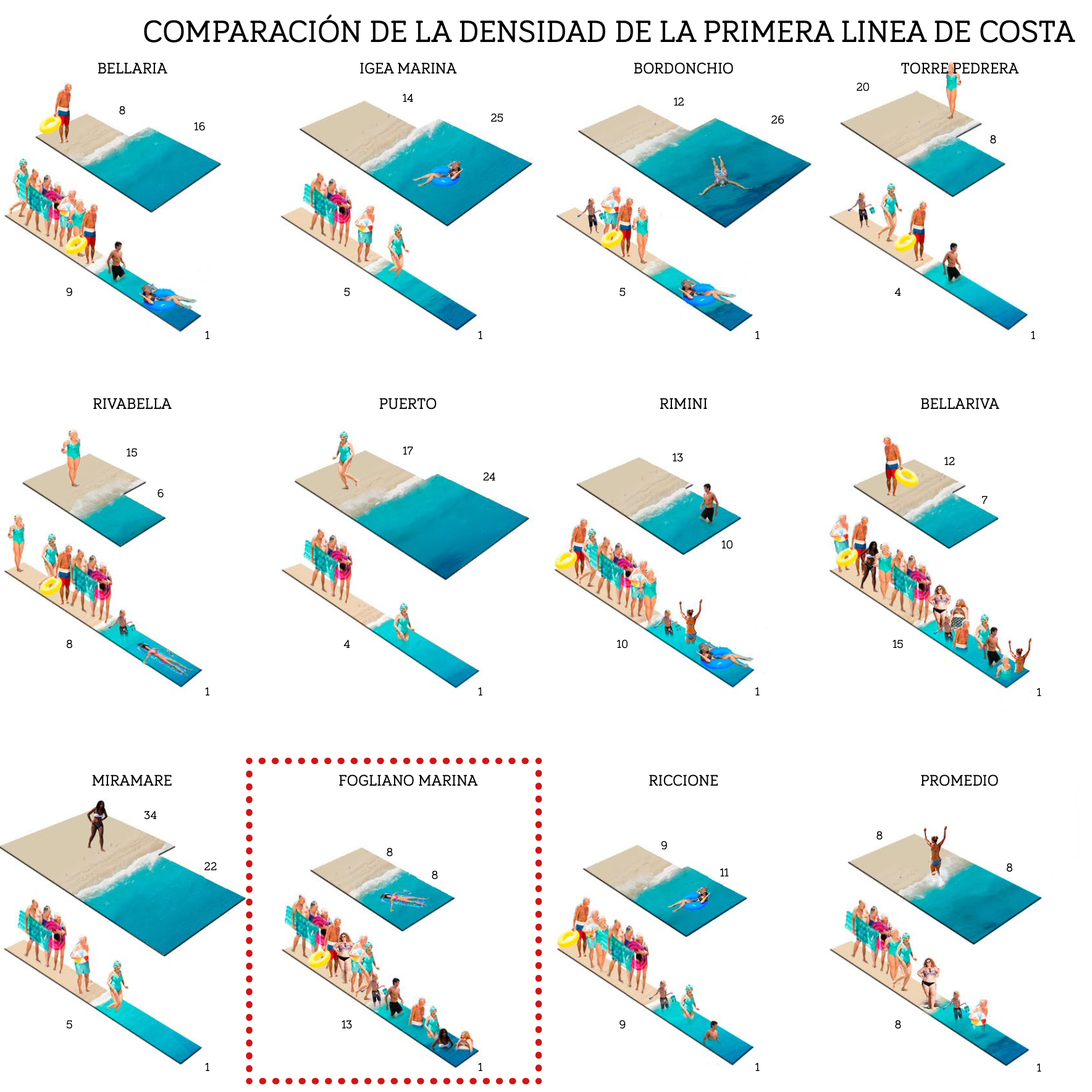
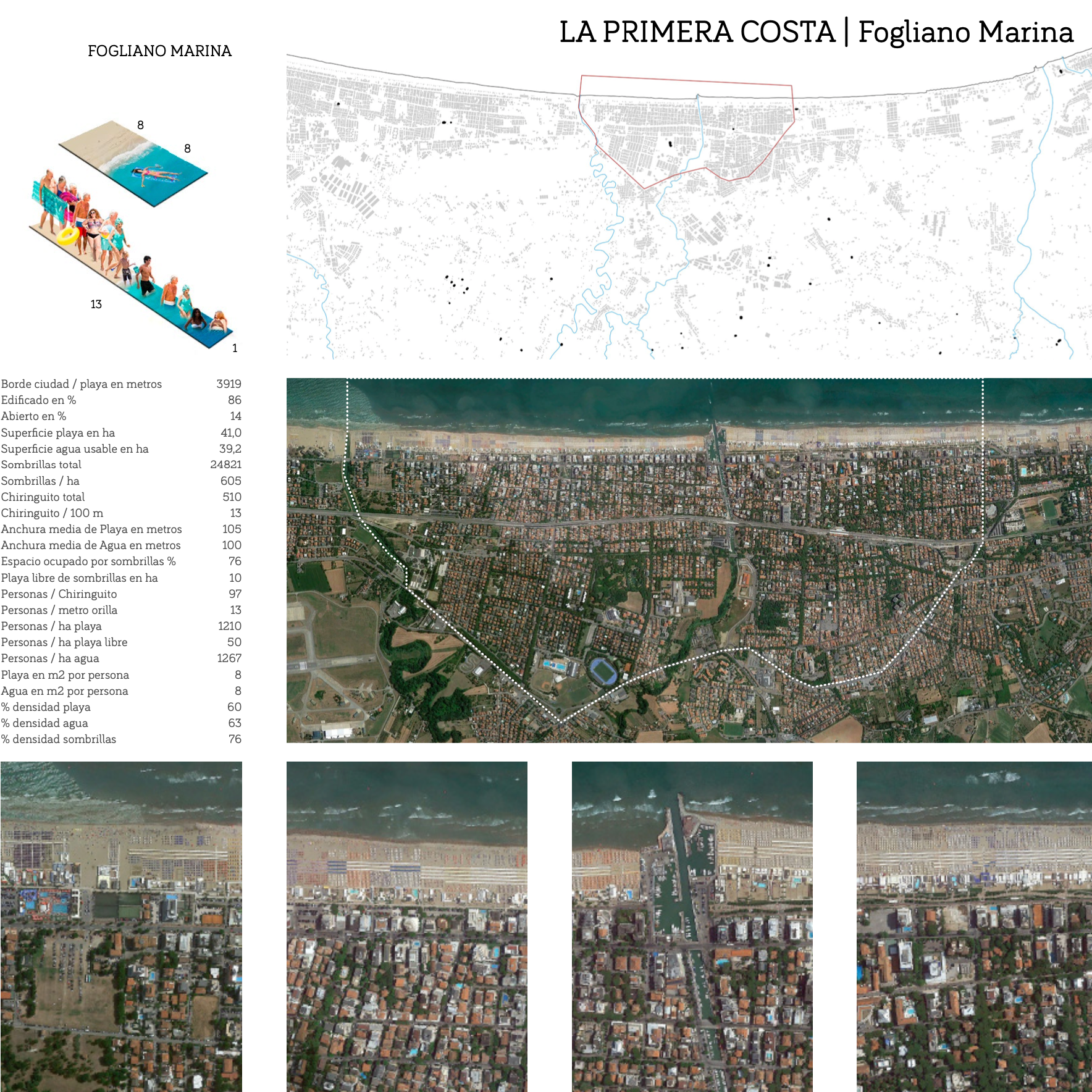
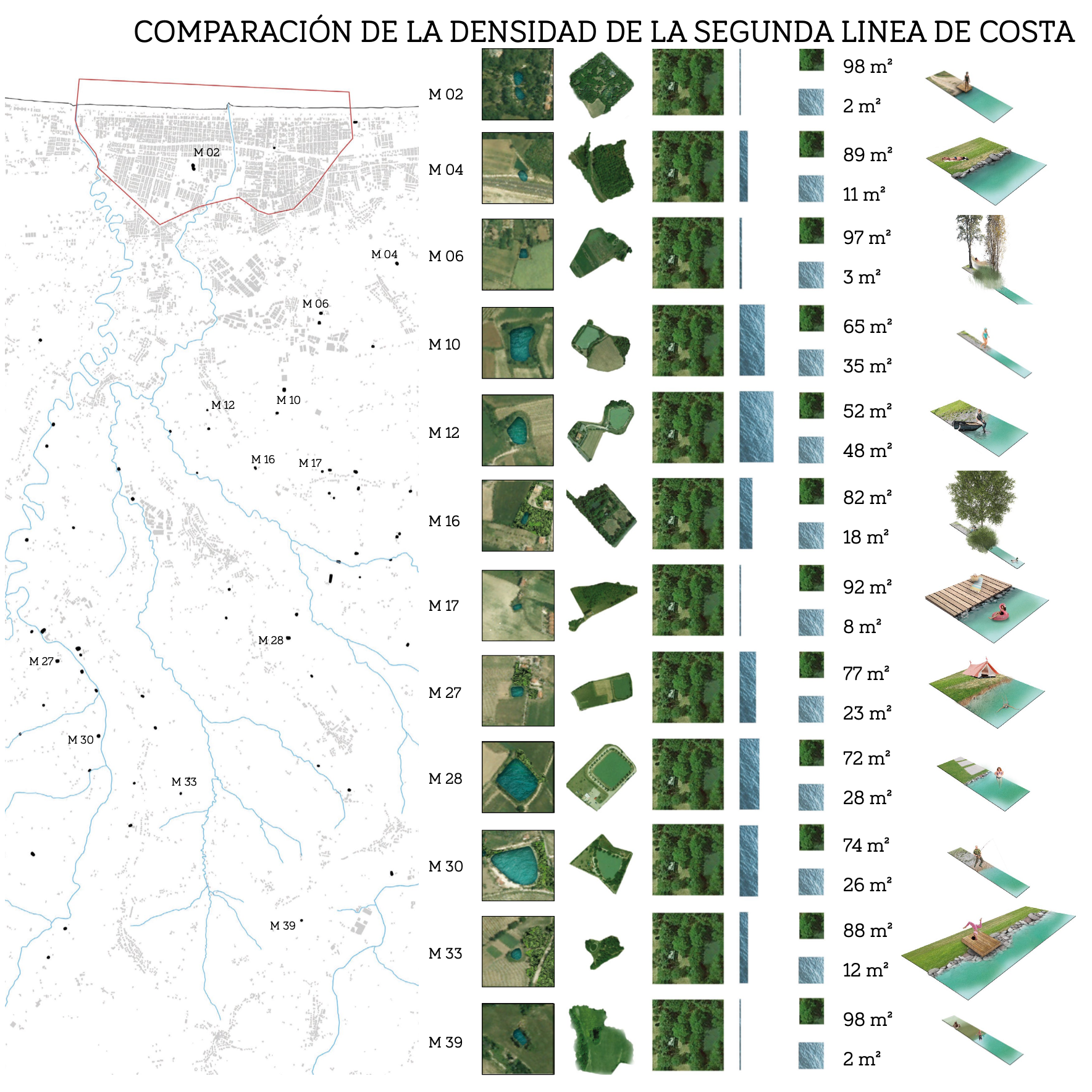
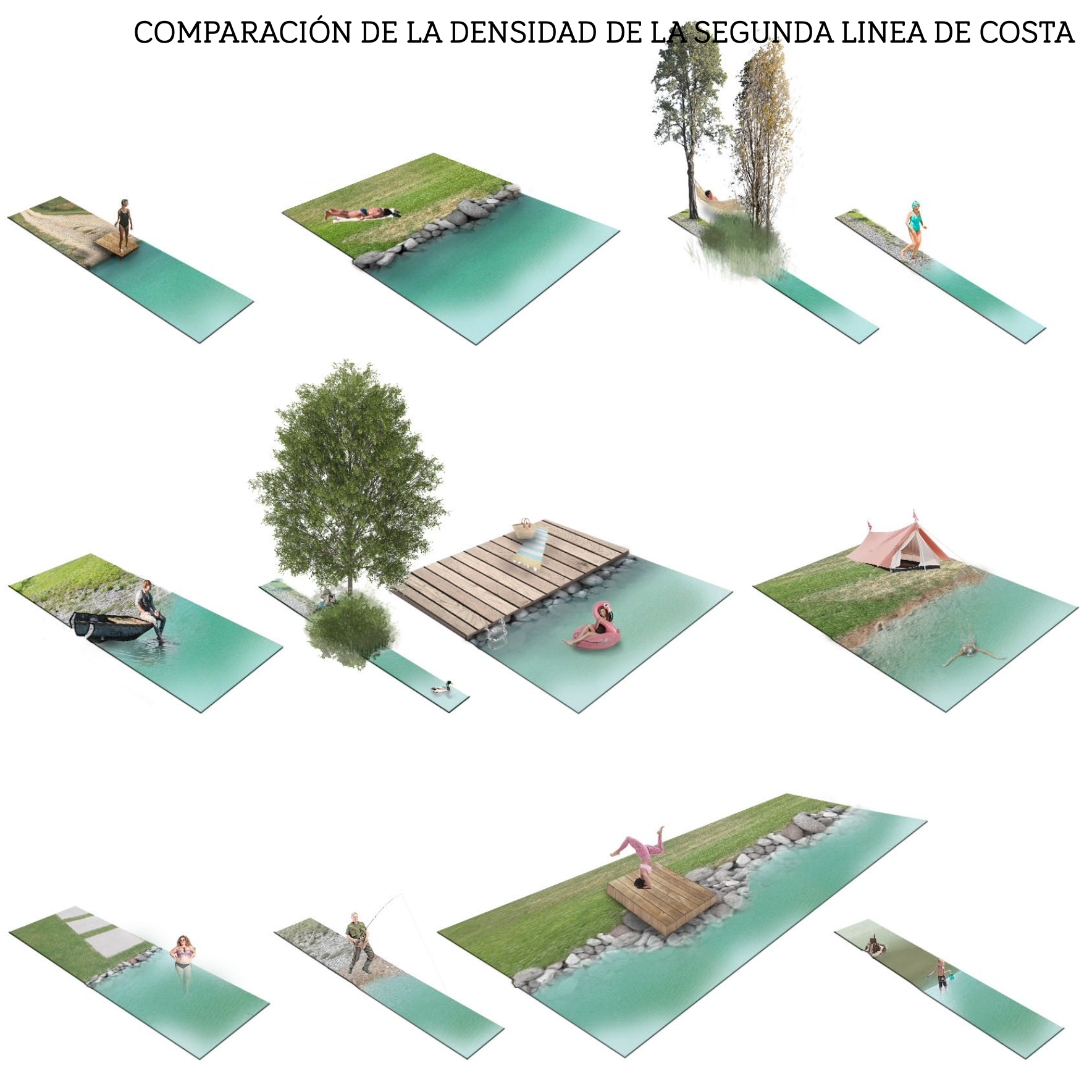
The macero as structuring element of the ancient agricultural landscape of Rimini.
Abstract
Forgotten values of landscape create a historical deposit of interactions between inhabitants and their territory. An uncountable number of landscapes with collective identity are abandoned and mark possibilities for new interpretations of our surroundings in times of crisis. The consumption of territories as natural icons has provoked difficult consequences in the management of nature. The former and actual behavior of treating the landscape generated a littoral crisis in the Mediterranean and this investigation is focusing the coast of Rimini, Italy. Those territories were constantly modifícated by humans for productive systems like the agriculture. In addition to that, mass tourism, which is not aware of its ecological and social scope, left behind the artificial and unhealthy landscape of Rimini’s coast. This investigation is suggesting a second coast for Rimini; decongesting the first coastline with its ecological deficit and distributing the economic income due to tourism over the whole amplitude of the littoral. This second coast is located all over the region of Rimini and Emilia-Romagna, remains of the ancient cultivation of hemp for textiles, water basins called maceri. Combining those elements with a new structure in the territory to protect the most sensitive ecosystems can give identity and touristic value to this heritage, also connecting the city and the littoral. The present agricultural landscape could create a constellation of small elements which represent cultural awareness, the restoration of the territorial organization and the possibility to empower the biodiversity and the productive landscape.
Keywords: mass tourism, mediterranean coasts, landscape strategies, resilient landscape, maceri
stella-zoë schmidtler © 2023